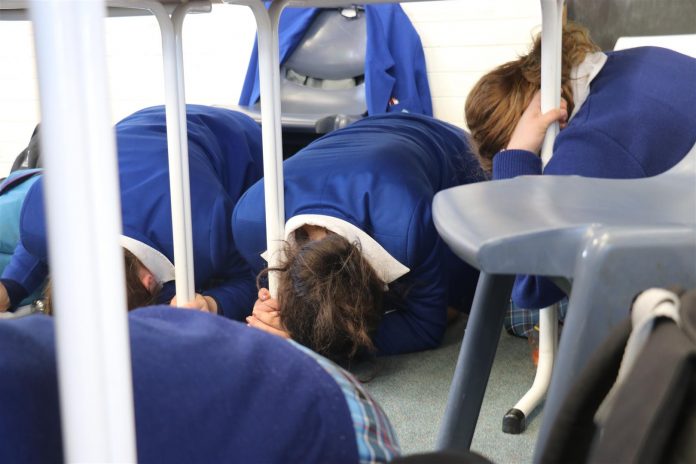Local emergency response groups will be gathering next week to demonstrate their earthquake preparedness.
It is ear-marked to happen on December 5 and is in response to the recent National Shake Out Day.
Representatives and volunteers from Fire and Emergency, St John, Land Search and Rescue, and Civil Defence will be at Baring Square East at noon talking about what they do in a largescale emergency and how you can get prepared.
The initiative was originally supposed to be held on October 27 when the rest of the nation recognised Shake Out Day, but due to bad weather local organisers opted to postpone.
The new date is also International Volunteer Day.
Paramedic and St John major incident support manager Andrew Beckley said the event will ‘‘show we are united in being ready to support our frontline first responders if any major incident happens’’.
Shake Out aimed to prepare New Zealandersin how to respond to a major earthquake, but this event will also bring awareness to the public on how operational support teams such as those in Fire and Emergency and St John major incident support can help in the event of an emergency.
‘‘We just want people to know that we’re ready to help out,’’ Andrew said. ‘‘(People) want to find out what we actually do when all this stuff happens. We see the ambulance and the fire engine and the police cars all run out the door, but we don’t often see the support elements that keep them running out the door.
‘‘We can help you if you want advice on what you might need at your home,’’ he said.
‘‘Get yourself ready, make sure you’ve got a good wee first aid kit, your hospital number if you’ve got it, a list of medications and things like that, and that it’s all in an easy place to grab should you need to, to look after yourself.
‘‘It’s kind of being ‘dooms day preppers’ but not really, it’s just being wary.’’
Following the devastation of the Christchurch and Kaikoura earthquakes, it became apparent that earthquakes and tsunamis are an emergency that all Kiwis need to prepare for.
New Zealand’s Alpine fault line runs through the Southern Alps of the South Island and is the boundary of the Pacific and Australian Plates.
There has been concern over what happens when this fault line ruptures, with experts claiming it is one of the ‘‘largest sources of seismic, or earthquake, hazards in Aotearoa New Zealand’’.
Geo-scientists say the fault has ruptured four times in the last 900 years, and estimate it will rupture again within the next 50 years.
Historically the ruptures have produced magnitude 8 earthquakes.
‘‘You should make yourself safe for the earthquake, because it is coming,’’ warned Andrew.
Government’s Get Ready initiative recommends people familiarise themselves with local hazards and have a plan in case disaster does strike.
‘‘Know your tsunami evacuation zone. Make plans for a tsunami h¯-koi if you are in a coastal area. Learn about the earthquake and tsunami risk in your area and other parts of New Zealand.
‘‘Download and share our Drop, Cover and Hold and Long or Strong: Get Gone posters. Remind yourself and others what to do in an earthquake or tsunami.’’
People interested in finding out what local emergency response teams do can pop along to the Shake Out event which will be held at lunch time at Baring Square East on December 5.
In the meantime, visit www.getready.govt.nz to find out how you should get ready for a major emergency.




